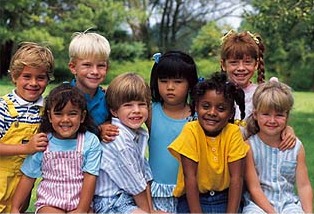PROTECT YOUR KIDS

PROTECT YOUR KIDS
by
Kyo Sa Nim Teri Vodden, LCSW
 As parents, our job is to protect our children. One of the most common and damaging injuries to children is sexual abuse. One in every three girls and one in every six boys is sexually abused before the age of 18 (although boys are less likely than girls to admit abuse). More than 70 percent of this abuse is committed by someone the victim knows.
As parents, our job is to protect our children. One of the most common and damaging injuries to children is sexual abuse. One in every three girls and one in every six boys is sexually abused before the age of 18 (although boys are less likely than girls to admit abuse). More than 70 percent of this abuse is committed by someone the victim knows.
You can help protect your children from abuse by following these steps:
TEACH BODY AWARENESS
An awareness and understanding of body parts helps establish boundaries and increases a child’s ability to protect herself. Use a picture book and name the different body parts with your children. Discuss the value of each body part. Help your children identify the difference between “private parts” and “not-so-private parts.”
Describe private parts as places that we keep covered most of the time. Let your children know they have the right to decide who sees or touches these parts. Discuss how not-so-private body parts are easier to share. A smile, for example, can be shared with almost anyone. Remember that you must respect and enforce boundaries in order for your children to understand them.
AVOID SECRETS
Perpetrators are often able to continue in an abusive relationship by telling a child the sexual “play” is “their secret” or that the child will get into trouble if she tells anyone what is going on.
Tell your children that your family does not keep secrets. Let your children know, in front of baby-sitters and family members, that you expect them to tell you what goes on when you are not around. Explain specifically that you want to know if anyone touches them, looks at them or asks them to do something that makes them uncomfortable. Reassure them that they will not be punished for telling the truth.
DEVELOP PROTECTION SKILLS
Practice ways to get out of uncomfortable situations. Children can often protect themselves by saying “no” loudly and leaving the room. Pretending they are sick or have to go to the bathroom are other forms of protection a child can use.
ENCOURAGE POSITIVE SELF-ESTEEM
Children must know they are worth protecting or they will never be able to protect themselves.
Positive self-esteem can be fostered by showing respect, encouragement, and appreciation to all family members.
ENCOURAGE COMMUNICATION
Children cannot protect themselves from abuse if unless they can communicate. Help your children practice ways to express their feelings. Teach them to ask for a hug and to say no when they do not want to be touched. Reinforce the fact that they always have the right to say no.
ESTABLISH TRUST
Believe your children when they tell you they are not comfortable with someone. Watch for sudden changes in their behavior. Do not make them stay with a baby-sitter, friend, or relative if they express discomfort.
BE AWARE
If you suspect your children have been hurt, ask them. Let them know you notice behavior differences and are concerned about their welfare. Be suspicious of adults or older teens who want to spend time alone with your children. Child molesters prey on lonely children who respond to their attention.
STOP THE CYCLE
Most of the people who have been sexually abused have children who are sexually abused. It is vital that parents deal with their own past problems in order to be a source of protection for their children. Parents cannot teach what they do not understand.
If one of your children tells you she has been sexually abused, believe her. Children rarely lie about such a personal issue. Report sexual abuse to Child Welfare Services. Involve the child and other family members in therapy and self-defense courses to work through the pain and deal effectively with the abuse.
ENROLL IN SELF DEFENSE CLASSES
Kyo Sa Nim Teri Vodden, LCSW, Certified Soo Bahk Do Instructor, 3rd Degree Black Belt and Licensed Psychotherapist offers ongoing karate classes at:
Redwood Coast Soo Bahk Do (707) 825-9755
8th & L Street, Old Creamery, Arcata www.ArcataKarate.com